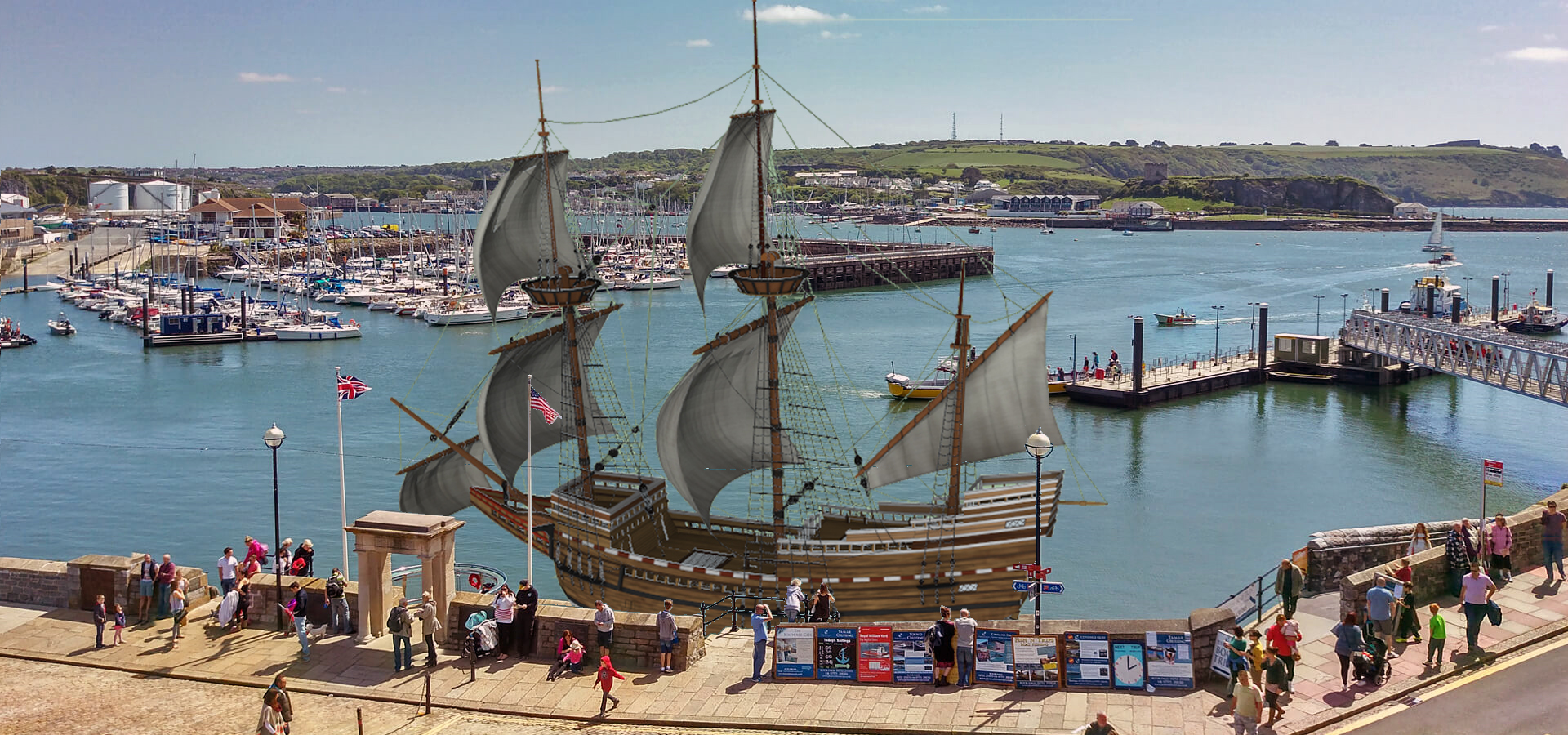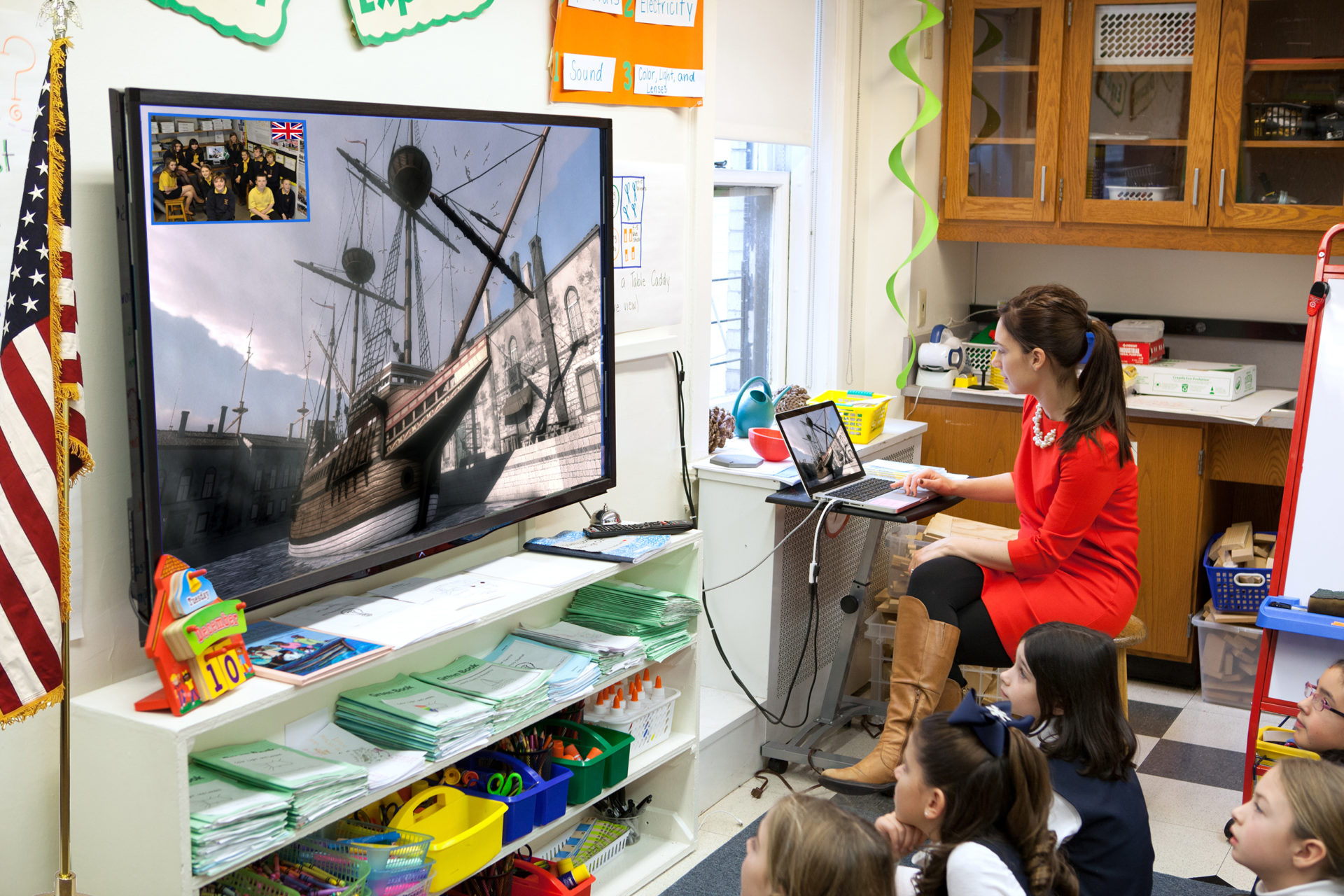EARLY AMBITIONS
THE ORIGINAL PLANS DRAWN UP FOR THE VIRTUAL MAYFLOWER PROJECT WERE AMBITIOUS.
These ambitions were based on the numerous suggestions for funding opportunities that arose following many of the meetings described earlier. In the event, no funding was actually ever made available, so, sadly, we had to scale back those ambitions dramatically, whilst still striving to deliver as impressive a demonstration as possible for the commemorations of September 2020, whilst ensuring that the project could be developed further for many years after the event. This ‘legacy’ ambition was absolutely central to the project from Day One.
Unlike the Virtual Anne project, the Virtual Mayflower presented us with more of a challenge, as our intention was to develop much more than simply a ‘walkthrough’ of a ship moored alongside the harbour.
We wanted the Virtual Mayflower to be both a collaborative and educational exercise, involving members of the public, local historians, school children, artists, actors and many more stakeholders, all of whom would contribute to the development of the virtual models and scenes.

For example, it was our goal to involve local school children in early research relating to the history of Bayard’s Cove in Dartmouth and Sutton Harbour in Plymouth, its buildings, occupants and local trades. In addition, we would teach the school children how to develop basic 3D models that would ultimately ‘frame’ their research and become incorporated into the final educational VR experience.
Appropriate elements of the National Curriculum would also be embedded into these creative practices, as would a range of further educational activities, once the Virtual Mayflower had been developed, such as:
- Science, maths and technology – 2D and 3D shapes, geometry, ruler and compass constructions and transformations (also relevant to the teaching of basic VR construction skills).
- Demonstration of shipbuilding (also house construction).
- Map-reading skills and coordinate systems (also relevant to VR construction skills), geometric/angular sightings of objects (i.e. from the virtual ship or land).
- Wind power – bearings, distances, speed measurement – ratios, proportions and rates of change.
- Basic physics – simple crane-based loading and off-loading from/to the quayside; moving cargo.
- Statistics – mean, mode and median using virtual Pilgrim passenger and crew measurements, plus range, dispersion, outliers, etc.
- Geography and the environment – flora, fauna, conservation and human impact.
- Illustrations of foci for discussing migration issues.
It was also our ambition to develop a collaborative international angle, involving similar groups and talents in the USA (e.g. at Plimoth Plantation; Schools in Plymouth Massachusetts and further abroad), thus delivering a truly hands across the Atlantic cultural legacy.

Indeed, it was this UK-USA cultural legacy ambition that led to an important trip across the Atlantic, the outcome of which has helped drive the early developments of the Virtual Mayflower project, and to provide important details relating to the ship, its occupants and of Plimoth Plantation – the Pilgrims’ first home in the New World.
